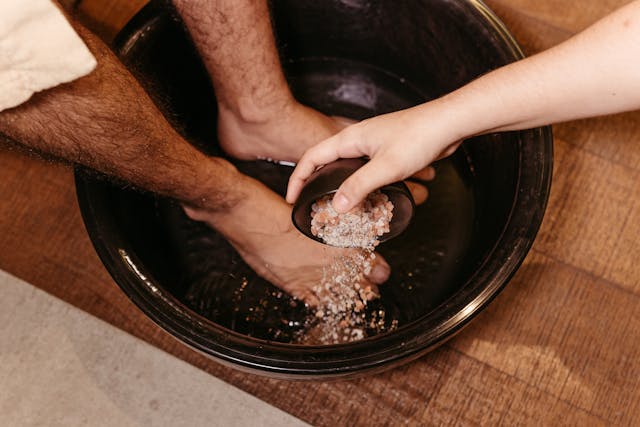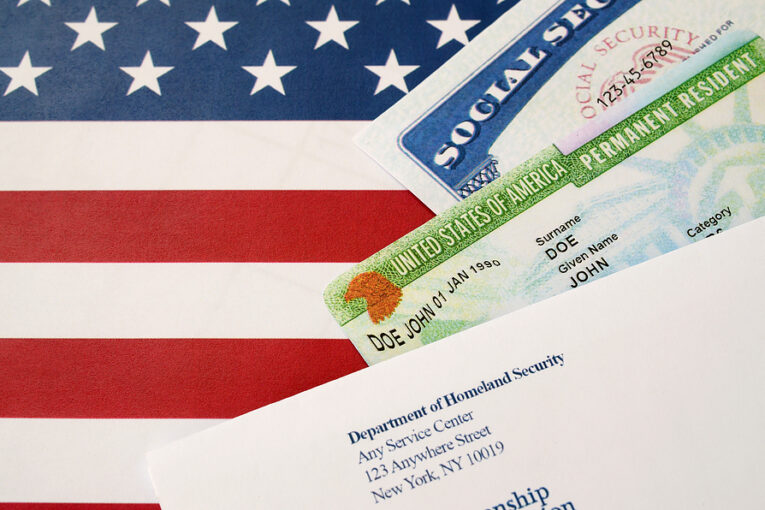
Maintaining soft and smooth feet is not only essential for aesthetics but also for overall foot health. Dry, cracked, or rough feet can be uncomfortable and may lead to more severe problems like infections if not properly cared for. Luckily, achieving soft feet at home is simple, affordable, and effective with the right techniques. In this article, we’ll explore various methods you can use to keep your feet looking and feeling their best.
1. Exfoliation is Key
Exfoliation helps remove dead skin cells that build up on your feet, leading to rough patches and calluses. Incorporating regular exfoliation into your foot care routine will leave your feet softer and smoother over time.
DIY Foot Scrubs:
You don’t need to buy expensive products; simple homemade scrubs work just as well.
- Sugar and Olive Oil Scrub: Mix two tablespoons of sugar with one tablespoon of olive oil to create a coarse paste. Gently rub the mixture over your feet in circular motions for a few minutes before rinsing it off with warm water. Sugar works as an excellent natural exfoliant, while olive oil moisturizes the skin.
- Baking Soda and Water Scrub: Combine three tablespoons of baking soda with a little water to form a thick paste. Apply it to your feet and scrub for several minutes to soften rough spots. Baking soda’s alkaline properties make it an effective agent for breaking down dead skin cells.
Make exfoliation a weekly habit to keep your feet free of dead skin.
2. Soak Your Feet
Soaking your feet softens hardened skin, making it easier to exfoliate. A foot soak also relaxes your muscles and promotes better circulation. Consider adding natural ingredients to boost the benefits.
Simple Foot Soak Recipes:
- Epsom Salt Soak: Epsom salt has natural exfoliating properties and can reduce swelling. Dissolve half a cup of Epsom salt in a basin of warm water and soak your feet for 20 minutes. The salt breaks down dead skin while the warm water helps soften it.
- Vinegar Soak: Vinegar is great for softening feet and preventing fungal infections. Mix one part white or apple cider vinegar with two parts warm water, and soak your feet for 15-20 minutes. Vinegar is naturally acidic and helps break down tough skin.
- Milk and Honey Soak: For a luxurious treat, mix a cup of whole milk and half a cup of honey into warm water. The lactic acid in milk gently exfoliates, while honey acts as a natural humectant, sealing moisture into your skin.
3. Moisturize Daily
After soaking and exfoliating, moisturizing is essential for locking in hydration and keeping your feet soft. The best time to apply a moisturizer is right after a foot soak or a bath when your skin is still slightly damp. You may also use soft feet cream. This allows the moisturizer to penetrate deeper.
Best Moisturizers for Soft Feet:
- Coconut Oil: Coconut oil is a fantastic natural moisturizer. It’s rich in fatty acids and helps repair the skin barrier while preventing moisture loss. Apply it generously to your feet before bed and cover them with socks to let the oil work its magic overnight.
- Shea Butter: Packed with vitamins A and E, shea butter nourishes the skin deeply, softening even the driest feet. It’s a great option if you need intense hydration.
- Petroleum Jelly: For an affordable and effective moisturizer, petroleum jelly creates a protective barrier that locks in moisture. It works best when used overnight after exfoliation.
4. Treat Calluses and Cracked Heels
Calluses and cracked heels are common foot issues that can make your feet feel rough and uncomfortable. Treating them at home is easy with the right tools and techniques.
Pumice Stone:
A pumice stone is a popular tool for softening calluses and smoothing rough skin. After soaking your feet, gently rub the pumice stone over the affected areas in circular motions. Avoid scrubbing too hard, as this can cause irritation. Regular use will reduce callus buildup over time.
Foot Masks for Cracked Heels:
If you suffer from cracked heels, foot masks can provide intense hydration and healing. Try a DIY foot mask with ingredients like:
- Banana and Honey Mask: Mash one ripe banana and mix it with a tablespoon of honey. Apply the mixture to your heels and leave it on for 20 minutes before rinsing. Bananas are packed with vitamins and antioxidants, while honey provides moisture and promotes healing.
5. Wear Proper Footwear
Prevention is just as important as treatment. The shoes you wear play a big role in keeping your feet soft and healthy. Opt for comfortable, breathable footwear that doesn’t put too much pressure on your feet. Avoid wearing tight shoes or walking barefoot on hard surfaces, as this can cause calluses and roughness.
If you spend a lot of time on your feet, consider using cushioned insoles or wearing padded socks for added comfort and protection.
6. Stay Hydrated
Keeping your feet soft isn’t just about external care—hydration plays a key role in maintaining soft, supple skin. Drink plenty of water daily to keep your skin hydrated from within. If your skin is dry and flaky, it may be a sign that you need more water.
Final Thoughts
Achieving soft feet at home is all about consistent care. With regular exfoliation, foot soaks, moisturizing, and the right footwear, your feet will stay smooth and healthy. Incorporate these simple DIY methods into your routine, and you’ll soon enjoy the benefits of softer, smoother feet without the need for expensive treatments or salon visits. With just a little effort, you can pamper your feet and keep them looking and feeling their best all year long.





